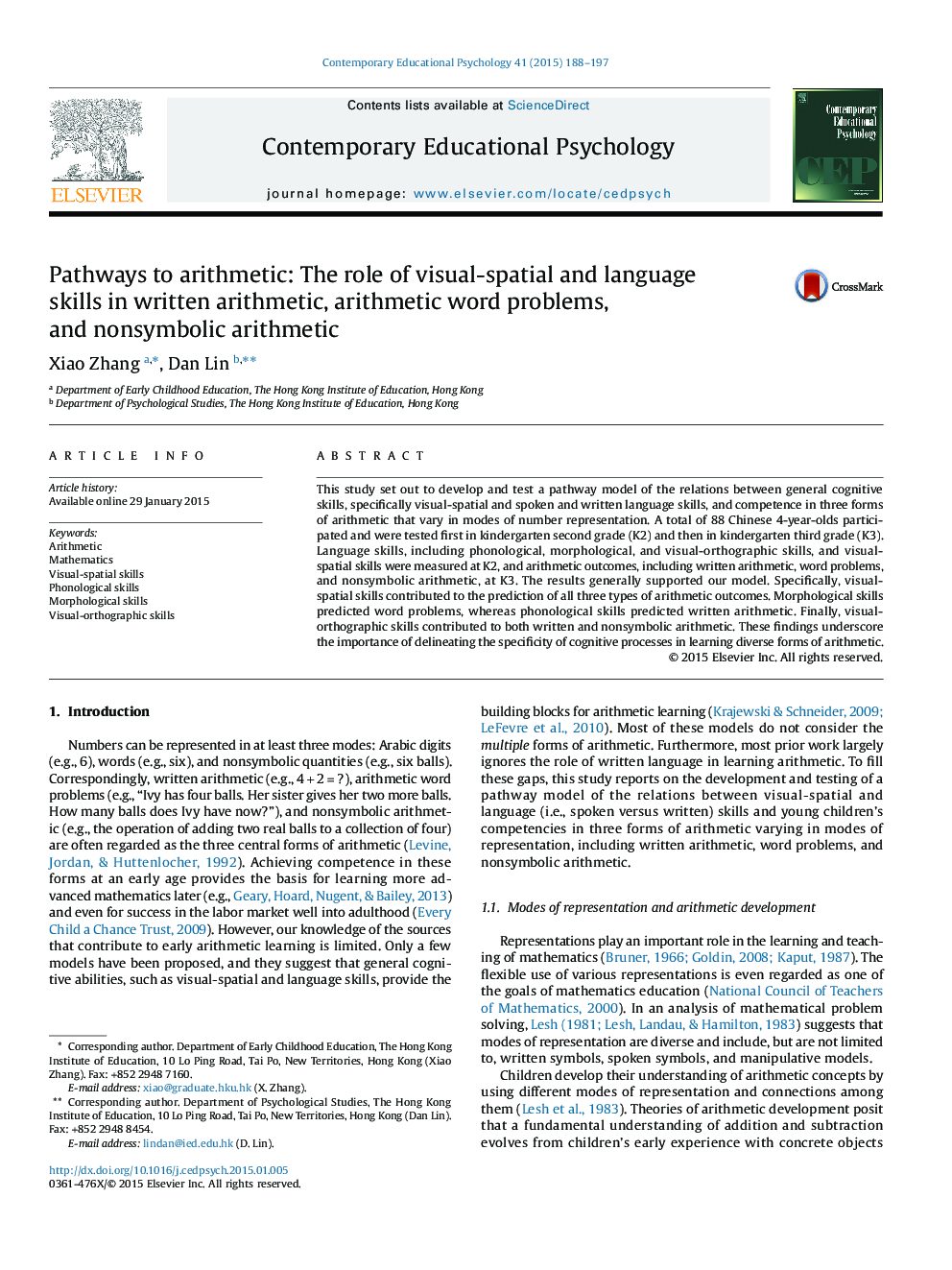| Article ID | Journal | Published Year | Pages | File Type |
|---|---|---|---|---|
| 352622 | Contemporary Educational Psychology | 2015 | 10 Pages |
•A model linking visual-spatial and language skills to arithmetic competence is proposed.•Visual-spatial skills predict nonsymbolic and written arithmetic and arithmetic word problems.•Morphological skills predict word problems.•Phonological skills predict written arithmetic.•Visual-orthographic skills predict nonsymbolic and written arithmetic.
This study set out to develop and test a pathway model of the relations between general cognitive skills, specifically visual-spatial and spoken and written language skills, and competence in three forms of arithmetic that vary in modes of number representation. A total of 88 Chinese 4-year-olds participated and were tested first in kindergarten second grade (K2) and then in kindergarten third grade (K3). Language skills, including phonological, morphological, and visual-orthographic skills, and visual-spatial skills were measured at K2, and arithmetic outcomes, including written arithmetic, word problems, and nonsymbolic arithmetic, at K3. The results generally supported our model. Specifically, visual-spatial skills contributed to the prediction of all three types of arithmetic outcomes. Morphological skills predicted word problems, whereas phonological skills predicted written arithmetic. Finally, visual-orthographic skills contributed to both written and nonsymbolic arithmetic. These findings underscore the importance of delineating the specificity of cognitive processes in learning diverse forms of arithmetic.
